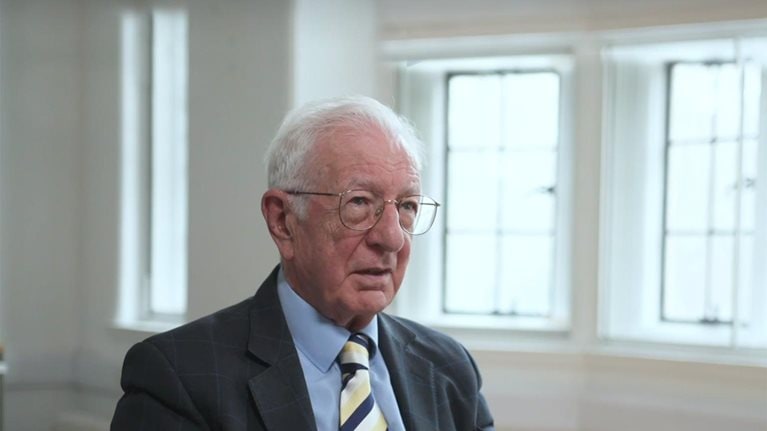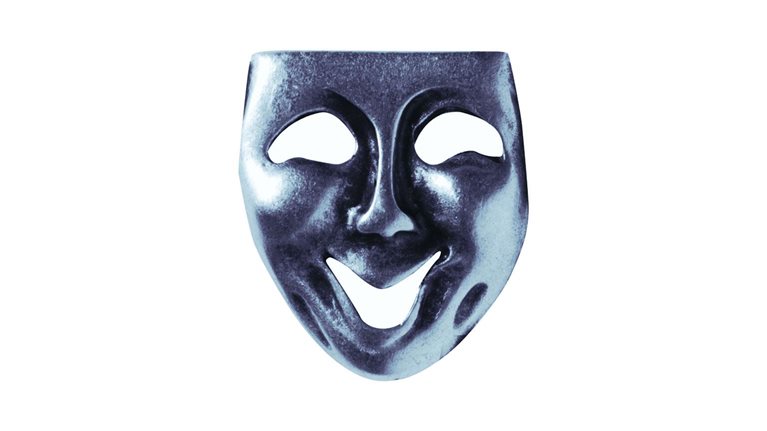In this edition of Author Talks, McKinsey executive editor Roberta Fusaro speaks with Stanford Graduate School of Business faculty members Jennifer Aaker and Naomi Bagdonas about their book, Humor, Seriously: Why Humor Is a Secret Weapon in Business and Life (Currency, 2021). Drawing on years of field research and classroom workshops, the authors explain the theory of humor—what it is, how it works, and why business leaders need it—without totally giving away the punchline. An edited version of the conversation follows.
What problem were you trying to solve with this book?
Naomi Bagdonas: The problem is that we working professionals have fallen off a humor cliff. This conclusion is based on research with over 1.4 million people, in 166 countries, who were asked a really simple question: “Did you smile or laugh a lot yesterday?” At age 16, 18, or 20, people are largely saying yes. At age 23, the answer quickly becomes no—and we don’t start laughing again until we retire. We go to work and we stop laughing. We asked ourselves, “How would our businesses and our lives change for the better if we had more joy at work?” More broadly, we wanted to understand how would our world change for the better if each of us navigated our lives on the precipice of a smile.
How did you come to focus on the topic?
Naomi Bagdonas: The question and the problem were personal for me. For ten years, I spent my days climbing the corporate ranks, and by night I was doing improv and sketch comedy. I was leading a double life. I was doing really well at my job, but I was doing what brought me joy only on weekends. As a result, I was inauthentic at work, I wasn’t making close friends, and I felt like I was close to burnout.
Jennifer Aaker: I never prioritized humor. I enjoy laughing—which is hard to say without sounding like a sociopath—but I never really thought of humor as being something that was important. It wasn’t aligned with the goal I had for most of my career, which was to publish papers, do research, and teach.
About eight years ago, I met Amit Gupta, an entrepreneur who was diagnosed with leukemia and couldn’t find a match in the national bone-marrow registry. He used humor and levity to meet this challenge. To find matches, he planned BYOSA—bring your own South Asian—parties in New York clubs. He asked comedians to do public-service announcements: Give a Spit About Cancer. In a short period of time, he found a match, and in the process he found matches for countless others. He survived. He’s very healthy now. And I went from thinking that humor was this superfluous thing to thinking that it was a secret weapon.
We wanted to understand how would our world change for the better if each of us navigated our lives on the precipice of a smile.
What surprised you in the writing, the research, or the reactions to the book?
Jennifer Aaker: One thing is just the ROI on humor. It has a substantive impact on many of the dependent variables that we look at from a business perspective. For example, leaders with a sense of humor—any sense of humor, not even a good sense of humor—are 27 percent more motivating and inspiring. Their employees are 15 percent more engaged when they work with them. And their teams are twice as creative as measured by having them solve a creativity challenge.
If you don’t care about motivation, admiration, or creativity, you might enjoy knowing that humor will make you wealthier. One of our favorite studies showed that if you add a simple, light-hearted line to the end of a sales pitch—like “This is my final offer. And I’ll throw in my pet frog”—consumers are much more likely to go for it. That’s right, a bad dad joke can get you an 18 percent–higher price point.
How do you know when and how to inject humor into a work situation?
Naomi Bagdonas: Part of it is realizing that humor at work is not really about being funny. It’s about being human and more connected to our colleagues. It’s not about what I say and whether people think I’m funny; it’s about how a joke will make people feel when it lands on them. Each of us has our own humor style. There are basically four humor styles—the stand-up, the sweetheart, the sniper, and the magnet—and each of us is naturally inclined to one or two of them. And we can flex our styles based on context.
Jennifer Aaker: The typology illuminates the natural risks that people feel or experience when they use humor at work. Stand-ups, for example, tend to tease others, almost as a sign that “I like you.” But that directness could hurt the feelings of those with different humor styles. Sweethearts may be more understated in their style of humor, but they’re often so focused on lifting others up that they can overindex on self-deprecation. At higher levels of status in an organization, self-deprecation is a really powerful tool. But at lower levels, it can actually boomerang. To use humor authentically at work, you need to understand not just your own humor style but that of your team.
Leaders with a sense of humor are 27 percent more motivating and inspiring, their employees are 15 percent more engaged, and their teams are twice as creative.
What happens if you bomb with your audience?
Naomi Bagdonas: You never use humor again.
Jennifer Aaker: Ever.
Naomi Bagdonas: Ever.
Jennifer Aaker: And then you die. Sorry, too dark? Did I go too dark?
Naomi Bagdonas: And that’s our book about humor, folks!
No, really—what happens if you bomb?
Naomi Bagdonas: Humor failures are really nuanced. There are two kinds. The first is the benign humor fail, where your joke just doesn’t get a laugh. The second is when we use humor that crosses a line in some way that we’re not aware of. In this context, it can be really tempting to brush it off as the other person’s problem, right? But these are actually golden opportunities to acknowledge our mistakes and reflect on our blind spots.
There is a rule in comedy: never punch down. And that is true in the workplace too. You never want to make fun of someone with lower status than you. This is particularly important for leaders because as we rise in the ranks of an organization, our playing field for humor changes. Senior leaders may recognize that while self-deprecation wasn’t a tool that they used very well early in their careers, it can now be a superpower in their current position.
It also goes without saying that humor is incredibly context dependent. Take a minute to read the room. A CEO walked into the room shortly after letting one of his senior leaders go and made an insensitive joke about her departure. He did it because he wanted to diffuse tension in the room. But if he had taken a moment to recognize what was really going on for him, and to have a moment of empathy for those in the room, he never would have made that joke.
What if you’re not naturally funny—can you learn to be?
Jennifer Aaker: As someone who was voted the least funny person in my family by all five members, including the dog, I have an answer to that one—yes! Our research shows that humor is a learnable skill. We all have a sense of humor, and, using the humor typology, we can understand others’ sense of humor. We can learn how to be funny from others, especially comedians.
The power of humor isn’t just in building bonds or sparking creativity or increasing status or even improving resilience and mental well-being. It’s about finding a balance between gravity and levity and giving power to both.



